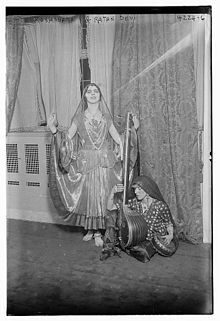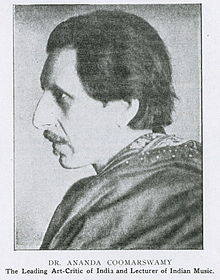Aldous Huxley and Alternative Spirituality
Texts and Studies in Western Esotericism
- Boston, MA:Brill, August2019.366 pages.$203.00.E-Book.ISBN9789004406902.For other formats: Link to Publisher's Website.
Review
Aldous Huxley is among the most important thinkers of the 20th century. He was a key figure among a network of intellectuals and writers interested in transcendence and transformation, and he enormously influenced the Human Potential Movement, the 1960s psychedelic counterculture, the New Age Movement, and deep ecology.
In Aldous Huxley and Alternative Spirituality, Jake Poller reviews Huxley’s investigations and experiments in sociology and mysticism in comparison to the differing perspectives on similar themes in his fiction, including Brave New World (Chatto & Windus, 1932) and Island (Chatto & Windus,1962). Poller skillfully shows the modern literary influence of H.G. Wells and D.H. Lawrence on Huxley’s early aesthetic and also defines a cultic milieu for the Perennial Philosophy, which is contrasted to historical antecedents and similar variations. The author draws heavily from the literary criticism of David Bradshaw and cites Wouter J. Hanegraaff and Jeffrey J. Kripal in positing a Western esoteric tradition. Finally, Poller situates Huxley in a sequence of mind-altering drug champions that include P.D. Ouspensky and Aliester Crowley as predecessors, scientific researchers Humphrey Osmond and Albert Hoffman, and popularizers such as Timothy Leary and Terence McKenna.
Huxley critiqued the aims of Gerald Heard’s Open Conspiracy Club, which envisioned a collective eschatology in Western psychology when an elite group of scientists and industrialists displace nationalist states with a rational, technocratic planetary government. During the first phase, the vague beginnings of organization sought to define the aims with proposals and propaganda, intimate contact with educational reformers, and actual development of the Earth’s resources in a global economy and world banking system. Huxley, who was a member of Heard’s Peace Pledge Union, worried about the dangers of machines intended to elevate humanity instead enslaving people, and he also warned about the possibility of exploitation when humans are trained (and drugged) to be obedient workers and predictable consumers. Huxley believed that peace is not possible without a religious philosophy agreeable to all nations. He rejected behavioralism in favor of Immanuel Kant’s transcendental idealism and proposed a Minimum Working Hypothesis and FourFundamental Tenets of the Perennial Philosophy, which is not universal (found in all religions at all times) but recurs in several traditions. Huxley was intrigued by examples of socially and spiritually mandated forms of sexual promiscuity, and his ideal politics would make the world safe for mystical experience.
Poller traces the varieties of perennialism starting with definitions: “spiritual” is neither secular nor is it institutional religion; “alternative” is not mainstream culture. Mysticism (as defined by William James and Rudolf Otto) is not esotericism (a Renaissance synthesis and polemic Other to Enlightenment discourse) which is not occultism (like Theosophy and the Hermetic Order of the Golden Dawn).
Moreover, Huxley’s Perennial Philosophy is historically distinct from both De Perennis Philosophia (the Vatican librarian’s response to Luther’s protest) and also Marsilia Ficino’s Prisca Theologia (a Platonic worldview derived from the wisdom mythologized in legends of Moses, Hermes Trismegistus, Zoroaster, Orpheus, etc). The late 19th-century and early 20th-century cultic milieu was strongly determined by three inspirations: The Secret Doctrine by Madame Helena P. Blavatsky (Theosophical Publishing Society, 1875), which proposed hidden masters attempting to reconcile all sects and nations under a common system of ethics (later interpretations by Annie Besant and Alice Bailey expanded this concept into administrative offices of a planetary government); Traditionalism (represented by Rene Guenon, Julius Evola, Ananda Coomaraswamy, and Frithjof Schuon) which claimed to transmit a superior but partially corrupted and incomplete ancient knowledge which is inaccessible except through initiation rites similar to the Sufis and Freemasons; and, Neo-Vedanta which emerged from the cross-pollination of Unitarian Christianity and American Transcendentalism and produced a “New Dispensation” that claimed right guidance and practice will enable correct perception of the truth which has been concealed or distorted.
Huxley drafted the prospectus for Heard’s Trabuco College of Prayer, an intentional community imitating the charity and compassion of religious orders. It was imagined as an undogmatic, nonhierarchical, nondenominational club for mystics and rest center for social workers. It was open to maladjusted youth seeking to regain control of themselves and return to an integrated life in the world. Heard was interested in the regeneration of the individual (168), but he also believed the only hope for our derelict civilization is in the emergence of Neo-Brahmins who have attained the next stage of evolution and assumed leadership of humanity (158). Heard practiced an idiosyncratic discipline seeking a telepathic connection to an impersonal psychic field which had no resemblance to Patanjali’s yoga or Swami Vivekananda’s program (151). Huxley visited six times, once with Jiddu Krishnamurti who was disturbed and declined to return. Heard judged his attempt to be a failure and donated the compound to Swami Prabhavananda. Huxley’s interest pivoted toward tantra, which Poller compares to descriptions by Heinrich Zimmer, John Woodroofe, and Hugh Urban.
Huxley believed human progress results not from an evolutionary leap or paranormal training, but through cultivating existing potential aided by pharmacology. Heard also promoted LSD as an educational tool to right-wing Libertarian groups and introduced the drug to the engineers at the Sequoia Seminars who were in pursuit of a man-machine symbiosis through computer-augmented and artificial intelligence. Huxley regarded LSD as “moksha-medicine” (liberation) and the cure-all for modern problems. He took psilocybin at MIT with Leary, who dosed members of the Vedanta Center in Boston using Ganges water in a chalice. Huxley advised Leary to “turn on the elites” and advocated appropriate set-and-setting, but Allen Ginsburg persuaded Leary to reach out to the public instead. The movement that emerged was chaotic and dangerous.
There was a time when perennialism flourished in the counterculture (through Alan Watts) and in the academy (through Mircea Eliade). However, this important branch of intellectual history and associated figures (including Carl J. Jung, Joseph Campbell, and Huston Smith as exemplars in their respective fields) was stigmatized and rejected in the postmodernist demolition project. Poller rescues Huxley from the disdain heaped on his “synthetic Yoga-Buddhic-Christian religion” and shows the connection between Huxley’s experiments in lived ideology as reflected in his creative literary achievements. Poller’s compelling book enhances appreciation and deepens respect for Huxley’s fiction and visionary mysticism.
Patrick Horn is a Public Scholar and the Membership Committee Chairman for the Religion Communicators Council Board of Governors.






 Wikiquote has quotations related to:
Wikiquote has quotations related to: 

